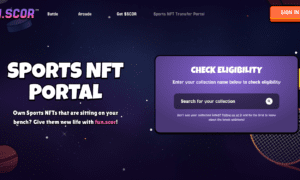Introduction
In the digital age, social media has emerged as a powerful platform for businesses to connect with their target audience and drive revenue growth. Social media advertising, in particular, has revolutionized the way businesses promote their products and services, allowing them to reach a wider audience and generate measurable results. This article explores the role of social media advertising in driving revenue, highlighting best practices and presenting real-world case studies to illustrate its effectiveness.
Understanding the Impact of Social Media Advertising on Revenue
Social media advertising offers businesses numerous advantages when it comes to revenue generation. Firstly, it provides a highly targeted approach, allowing companies to reach specific demographics, interests, and behaviors. By tailoring advertisements to the preferences of their target audience, businesses can increase the likelihood of conversions and sales.
Furthermore, social media advertising enables precise tracking and measurement of campaign performance. Advanced analytics tools provide valuable insights into metrics such as click-through rates, engagement levels, and conversion rates. Armed with this data, businesses can optimize their campaigns and allocate resources more effectively to maximize revenue.
Best Practices for Effective Social Media Advertising
To leverage social media advertising successfully, businesses must adhere to a set of best practices. Here are some key strategies to consider:
a. Clearly Define Campaign Objectives: Before launching a social media advertising campaign, it’s essential to define clear and measurable objectives. Whether it’s driving sales, increasing brand awareness, or expanding customer reach, having well-defined goals will help guide the campaign’s direction and ensure the allocation of resources aligns with the desired outcomes.
b. Identify and Understand the Target Audience: Knowing the target audience is crucial for crafting compelling and relevant advertisements. Conduct thorough market research to identify the demographics, preferences, and pain points of the target audience. This information will help create targeted messaging that resonates with potential customers and drives conversions.
c. Tailor Ad Content for Each Social Media Platform: Different social media platforms have their unique characteristics and user demographics. To maximize the impact of social media advertising, businesses should adapt their content and ad formats to suit each platform. For example, visually appealing imagery may work well on Instagram, while concise and engaging videos could be more effective on platforms like TikTok.
d. Leverage Remarketing and Custom Audiences: Remarketing allows businesses to target users who have already interacted with their brand or website. By creating custom audiences based on previous engagement, businesses can re-engage potential customers with tailored advertisements, increasing the chances of conversion. Remarketing can be a highly effective strategy for driving revenue growth.
e. Continuously Test and Optimize Campaigns: A/B testing is a valuable technique in social media advertising. By testing different ad formats, messaging, and targeting strategies, businesses can gather data on what works best for their audience. Continuously optimizing campaigns based on these insights will drive better results and improve overall revenue generation.
Case Studies: Real-World Examples of Social Media Advertising Success
To showcase the effectiveness of social media advertising in revenue generation, let’s explore two real-world case studies:



































